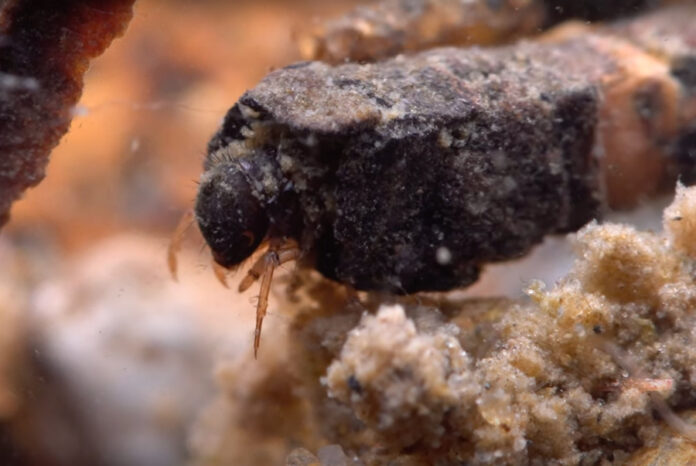Cased caddisflies can be found in a wide variety of streams, and you can often see their little houses attacked to rocks or logs on the streambed. These insects do get knocked loose and become part of the “behavioral drift,” where they are available to trout. As Tim Flagler of Tightline Productions mentions in the video below, the trout will eat these caddisflies case and all.
The pattern that Tim demonstrates here could hardly be easier, but the end result is a buggy little pattern that he finds “so effective.” Pay attention to the way Tim prepares the pheasant-tail fibers, cords up the thread to help attach them, and then how he uses the tension of the hanging thread to keep the fibers in place as he wraps.
Cased Caddis Larva
Hook: 3X-strong, black nickel barbless hook (here, a Fulling Mill FM5105), size 16.
Thread/Head: Fluorescent chartreuse, 8/0 or 140-denier.
Case/Body: Pheasant-tail fibers.
Adhesive: Head cement (here, Sally Hansen Hard-As-Nails).
Tools: Whip-finish tool.
Credit: Source link






























